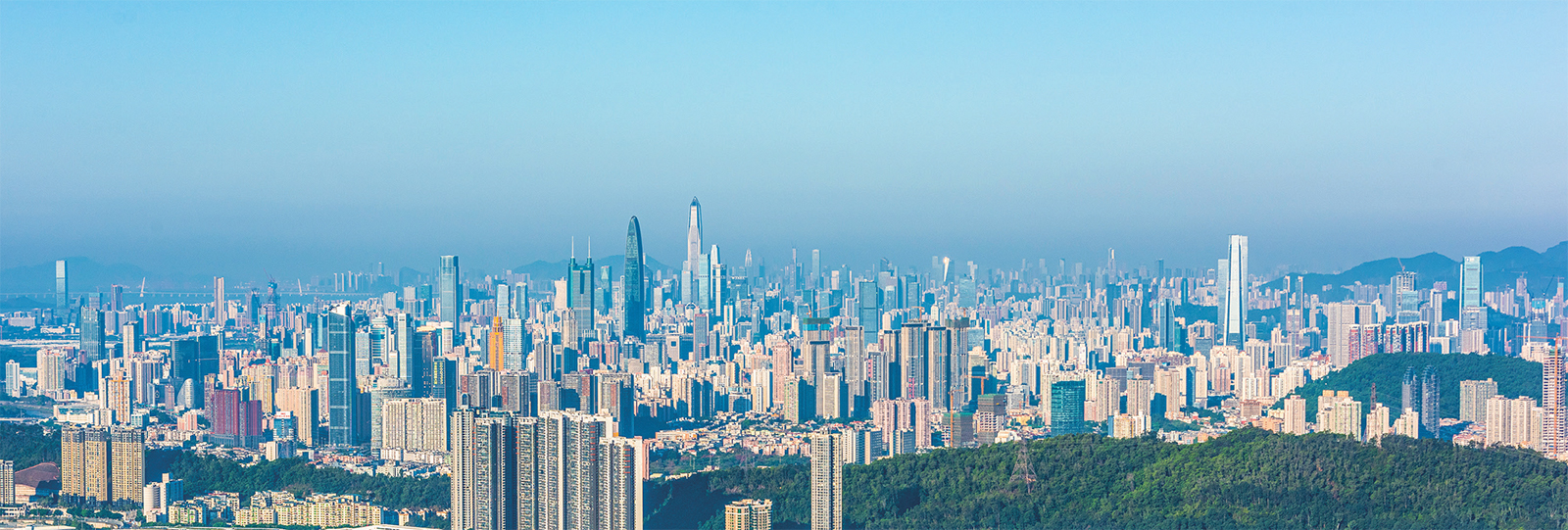
Author: Fan Gang, President of CDI and Cao Zhongxiong, Assistant President of CDI.
As a special economic zone and a city blossoming on science and technology, Shenzhen, in South China’s Guangdong Province, is not only an economic front-runner, but also a great “mirror” illustrating China’s quick pace of technology innovation and economic development.
The development of Shenzhen has been subject to questioning on many occasions in the past decades, but the city has always responded by ironing out the doubts through its rapid development in both headwinds and tailwinds.
Shenzhen represents new quality productive forces, new systems, as well as birth of new and creative policies. It is the best window to observe the transformation of China’s economic development. A more in-depth examination of Shenzhen’s economic growth can offer proof of the stable and high-quality development of China.
Shenzhen’s rapid rise demonstrates the strength of China’s ability to achieve quality breakthroughs in its economic development, reinforcing public confidence in the country’s economic creativity and capability.
Despite the challenges posed by the lackluster global economy and an increasingly complex and uncertain world environment, China’s economy managed to achieve 5.2 percent growth in 2023. During the same period, Shenzhen’s local GDP reached 3.46 trillion yuan ($480 billion), representing a 6 percent year-on-year increase, ranking first among the first-tier cities in China, outpacing the growth of Beijing, Shanghai and Guangzhou.
In 2023, Shenzhen’s strong retail sector has become a major new driving force for economic growth. Total retail sales of consumer goods reached 1.05 trillion yuan last year, an increase of 7.8 percent over 2022, officially entering the club of Chinese cities with one-trillion-yuan consumption.
From the perspective of industrial structure, Shenzhen regards the development of strategic emerging industries and the cultivation of future industries as important levers to accelerate the formation of new quality productive forces, and coordinates the construction of industrial clusters with advanced manufacturing as its backbone.
By 2023, the strategic emerging industries in Shenzhen have achieved an added value of 1.45 trillion yuan, accounting for 41.9 percent of the city’s GDP, with a year-on-year growth of 8.8 percent. In terms of the emerging industries, Shenzhen dares to make forward-looking layouts in cutting-edge technology innovation.
New technologies are broadly utilized in Shenzhen, helping form new industries in China. Shenzhen-headquartered company BGI Genomics has been leading in the global genetic technology field. Tencent, a Fortune Global 500 company, has played a significant role in promoting the development of China’s digital economy. DJI has gone from Shenzhen to the global market, promoting the development and growth of China’s drone industry.
The sustained economic growth of Shenzhen highlights the significant potential of China’s economy, reflecting the promising prospects for continued growth and ongoing improvement in China’s future development.
Innovation is the primary driving force behind Shenzhen’s rise, serving as the lifeblood of the city. Innovation is a defining characteristic of Shenzhen, playing a vital role in its development. Similarly, innovation is essential for the progress of China’s overall economy. More emphasis should be put on technological innovation on the national level, fostering new quality productive forces.
Eyeing high-quality development, Shenzhen is making great efforts to construct an industrial technology innovation center, playing the role of the leading incubator for Chinese technological advancement, and serving China’s future development.
Now, China has a number of emerging technology-heavy cities with development advantages such as Dongguan in South China’s Guangdong Province, Suzhou in East China’s Jiangsu Province, and Qingdao in East China’s Shandong Province. These cities are actively supporting technological innovation, the growth of private sector, and the cultivation of new quality productive forces, which will further stimulate the vitality and momentum of China’s development.
China’s economy is experiencing a period of steady recovery and a structural adjustment, with sufficient potential for endogenous dynamism and a large room for continued growth. As long as China focuses on solving all the problems in the course of its development, adheres to openness and high-value innovation, and continuously develops new quality productive forces, there is no reason why the Chinese economy will “peak” any time soon.








